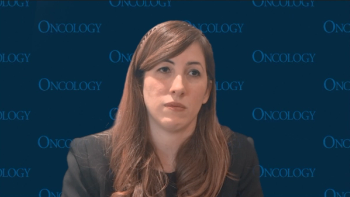
Julie Torode Discusses the WHO Cervical Cancer Elimination Strategy
The director of special projects at the Union for International Cancer Control spoke about the strategy released by the World Health Organization and what needs to occur to achieve the goals laid out by the organization.
Following a call from the World Health Organization (WHO) Director General in 2018, a global strategy was developed by the organization to accelerate the elimination of cervical cancer as a public health problem.
The strategy established goals and targets from 2020 to 2030 with a focus on 3 key pillars, including prevention through HPV vaccination, screening and treatment of pre-cancerous lesions, and management of invasive cervical cancer, including access to palliative care.
To eliminate cervical cancer, the WHO indicated that all countries must reach and maintain an incidence below 4 per 100,000 women-years.
“Ninety percent of girls should be fully vaccinated by 15 years of age, 70% of women should be screened at least twice with a high-performance test by age 45 and 90% of women with precancer or cancer should receive the appropriate care and treatment, including palliative care,” Tedros Adhanom Ghebreyesus, PhD, MSc, BSc, director-general of WHO, explained during a
According to the WHO, achieving these specified targets would yield reductions in both incidence and mortality. Further, by 2030, the median cervical cancer incidence rate would fall by 10%, setting the world on the path to avert 70 million cases in the century.
In an interview with CancerNetwork®, Julie Torode, director of special projects at the Union for International Cancer Control (UICC), discussed the strategy further and how individuals can aid in advocating for the advancement of this global strategy.
This segment comes from the CancerNetwork® portion of the MJH Life Sciences Medical World News, airing daily on all MJH Life Sciences channels.
Reference:
73rd World Health Assembly Decisions [news release]. Published August 7, 2020. Accessed August 20, 2020. https://www.who.int/news-room/feature-stories/detail/73rd-world-health-assembly-decisions
Newsletter
Stay up to date on recent advances in the multidisciplinary approach to cancer.















































































